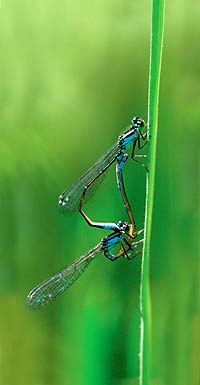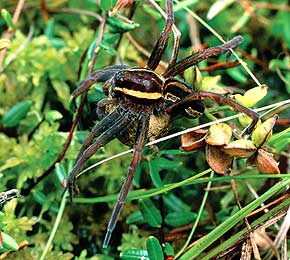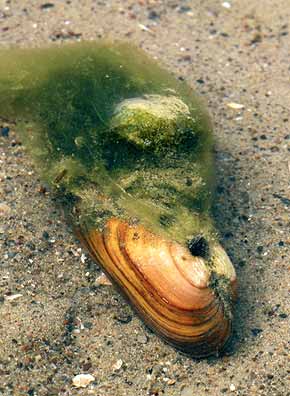|
15th |
WIGRY NATIONAL PARK
|
||||
|
of "WIGRY"
|
Anna Krzysztofiak
Invertebrate fauna
Research into invertebrate fauna in the region of Wigry lakes was conducted in the inter-war period at the Hydrobiological Station. A revival of the research into fauna of Wigry lakes surroundings took place after the establishment of the Wigry National Park.
Ciliates Ciliata belong to the less known groups of animals. The presence of 84 species of ciliates has been noted down up till now. Out of 79 species of flatworms Platyhelminthes found in the Wigry National Park 48 are turbellarian worms Turbellaria, 25 are trematodes Trematoda, and 6 are tapeworms Cestoidea.
In the region of Wigry lakes there are 24 species of caddis-flies Trichoptera. The butterfly Lepidoptera fauna consists of over 220 species of butterflies, of which many are rare and in danger of extinction. Of the group of Hymenoptera Hymenoptera, the ones of the family Apidae Apoidea and of the ant family Formicidae belong to the best known. Research into bees has shown the presence of nearly 200 species, which constitutes over 40% of the number of species of home bee fauna. Up to the present, 28 species of ants have been found in the WNP. There are 260 species of Diptera. On the turn of the 1980s and the 1990s the research into Syrphidae produced new data on the Diptera in the Park. We know, thanks to it, that 164 species of Syrphidae are found here.
The roundworm fauna Nemathelminthes in the Park is represented by 100 species. The numberc onsists of 88 species of rotifers Rotatoria and 2 species of celworms Nematoda. 28 species of oligochaetes Oligochaeta and 14 species of leeches Hirudinea have been identified in the water environment. Crustaceans Crustacea belong to the better known groups of Wigry lakes invertebrates. In all, 83 species of crustaceans have been found.
The occurrence of over 100 species of spiders Arachnoidea has been established, in this, one new species for the Polish fauna – Gnaphosa microps. The insect fauna has been recognized only to a small degree. Dragon flies, caddis-flies, flies from the family Syrphidae and some families of hymenopterous insects have been described relatively well. There are 39 species of dragon-flies Odonata, in this, two very rare species in our country – Eurasian Epitheca bimaculata and Euro-Siberian Libellula fulva.
As far as beetles Coleoptera are concerned, it has been shown that in the region of Wigry Lake there are 67 species of rove beetlesStaphylinidae, 17 species of the weevils Curculionidae, 20 species of bark beetles Scolytidae, nearly 100 species of Carabidae, 34 species of the diving beetles Dytyscidae. The research conducted nowadays into the phylum Mollusca in the area of Wigry lakes has made it possible to establish that there are 30 species in the Kamionka River and 13 species in the Czarna Hancza River. It has been found that there are 55 species of the phylum Mollusca in the Park.
So far, in the Wigry National Park, the presence of 47 protected species of invertebrates has been certified, which constitutes 45% of all animal species under protection in Poland. The majority of species are insects (Insecta): dragon-flies – 4 species, cockchafers – 10 species, butterflies – 4 species, and Hymenoptera – 22 species, the remaining are 4 species of the phylum Mollusca and 1 species of the leech.
|
||||
|
|
|



